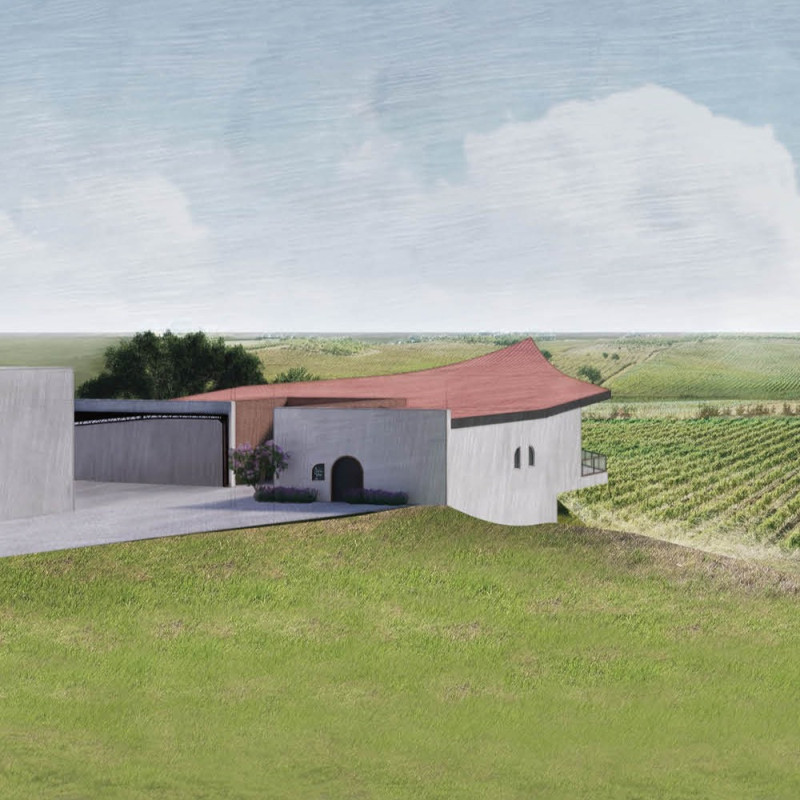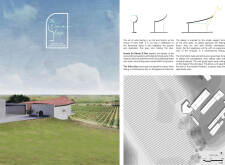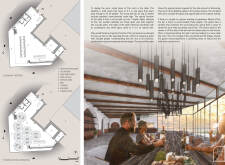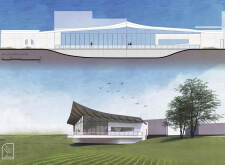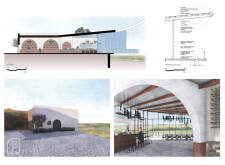5 key facts about this project
The main function of this project revolves around wine tasting, enabling guests to engage with both local wines and the intrinsic natural beauty of the vineyard. With its curvilinear silhouette reminiscent of a wine glass, the design concept aims to create an inviting atmosphere which enhances the guest experience. Large glass panels form the majority of the façade, promoting views of the vineyard while allowing ample natural light to flood the interior spaces.
The layout of The Wine Glass is meticulously crafted to support various activities within the tasting room. The main tasting area features a solid wooden table that can be reconfigured for different group sizes, thereby supporting both intimate and larger gatherings. Adjacent to this is the wine cellar, designed for optimal storage and display of the winery's offerings. A bar area complements these spaces, incorporating both functionality and aesthetic appeal. Each element is positioned to encourage fluid movement and interaction among guests, facilitating a social environment that aligns well with the nature of wine tasting.
Sustainability is a core principle of this project. The design utilizes locally sourced materials, such as concrete, wood, glass, and brick, reducing the environmental footprint while ensuring that the building resonates with its context. The natural finish of concrete and warm wooden elements combine to create a welcoming interior. The strategic placement of large glass panels enhances natural ventilation, allowing for passive temperature control throughout the space.
A distinguishing feature of The Wine Glass is its emphasis on sensory interaction. The architectural design fosters a multi-sensory experience where guests can engage with the aromas of wine, the visual beauty of the vineyards, and the tactile quality of the materials used in the interior. Lighting plays a crucial role as well; fixtures are designed to provide ambient illumination while highlighting key architectural elements.
The integration of outdoor and indoor experiences is another unique aspect of this design. Guests can enjoy panoramic views of the vineyards from multiple vantage points within the tasting room. The architectural form not only provides functional benefits but also enhances the overall ambiance, inviting visitors to appreciate the surrounding landscape intimately.
Explore the project presentation for detailed insights, including architectural plans, sections, designs, and innovative architectural ideas that define The Wine Glass. This exploration will provide a deeper understanding of the design principles, spatial organization, and materials that contribute to its architectural significance.


